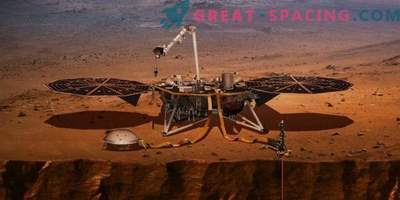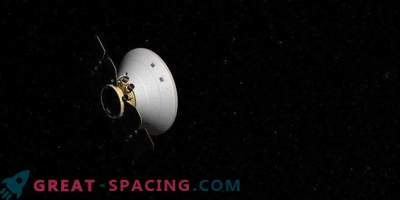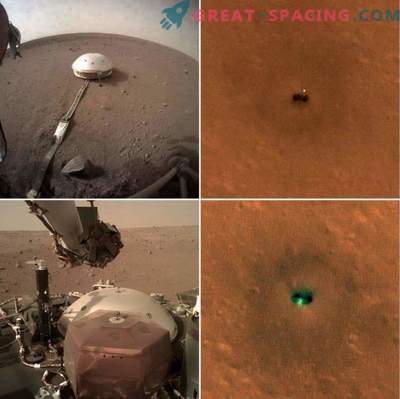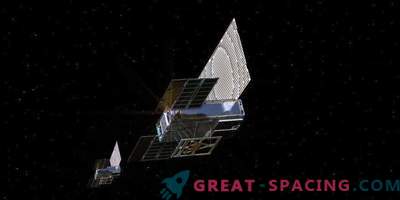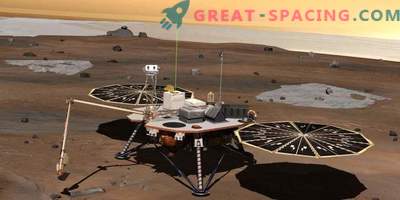
Mars has a new guest! On November 26, the NASA InSight landing module performed a soft landing on the surface of the Red Planet, overcoming a painful descent. InSight reached the Martian atmosphere, traveling at a speed of 19,795 km / h. During the last minutes of falling, the apparatus deployed a parachute, threw away a thermal shield and activated 12 descent engines to slow the fall and land on the surface.
This is a significant event, which is celebrated by all the employees of the agency. But the boarding module did not take a breather and immediately embarked on new duties. Within 10 seconds after landing, the InSight devices were already engaged in the first tasks of the mission - establishing a direct signal with the Earth and shooting a landing site.
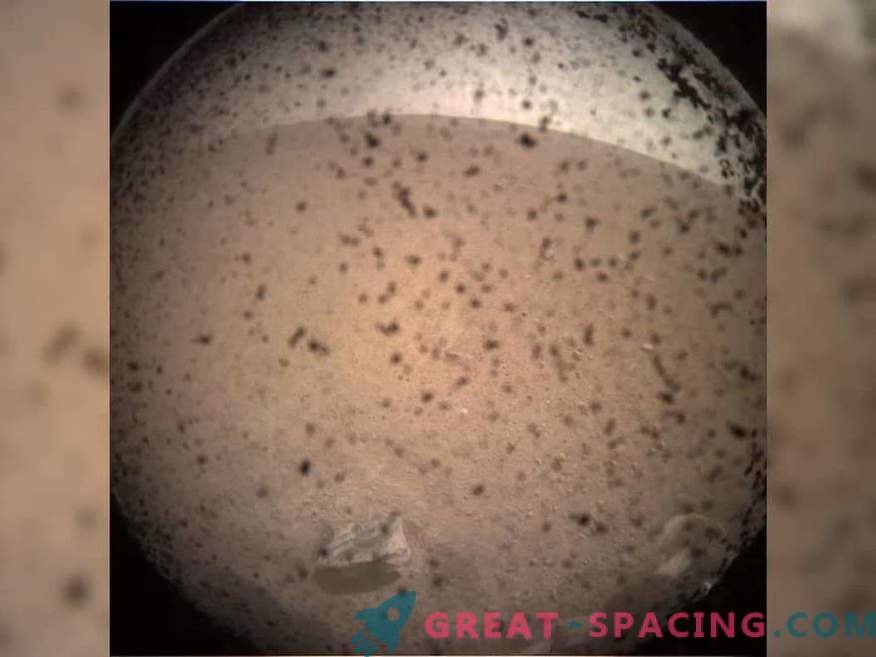
This is the first image of Mars taken by the NASA InSight landing pad after a successful landing on the Elysium plain on November 26, 2018. Visible dust in the picture is on the cover protecting the camera
In the evening, NASA announced the first “beep”, confirming the safety of the spacecraft. Everything suggests that InSight feels great and does not complain. A few minutes after landing, the platform was able to see Mars with one “eye”, as the wide-angle camera captured the reddish surface area. The landscape was without stones. The black spots in the image are dust grains adhering to the protective case of the camera. First of all, InSight had to create a power source. The first minutes of the work took place at the expense of charged batteries, as the solar batteries were reset. The battery is able to keep the device running for 16 hours, but InSight had to launch its own solar battery as a matter of urgency. After 16 minutes after landing, the dust should have settled and the solar panels should turn around automatically, without additional orders from the Earth.
After activating the solar panels, the InSight should get more photos and begin to set up the rest of the devices. The landing platform has two cameras. After that, they plan to deploy a seismometer (SEIS) and a thermal probe HP3, which will measure the temperature of Mars.
All InSight updates will be transmitted via a microwave signal to orbital satellites that will store data on board and transmit to Earth. There is still a lot of work to be done on setting up InSight, so you need to act without haste and methodically. It will probably take several months, and only in 2019 the real work will begin.




